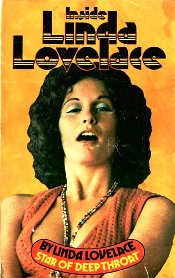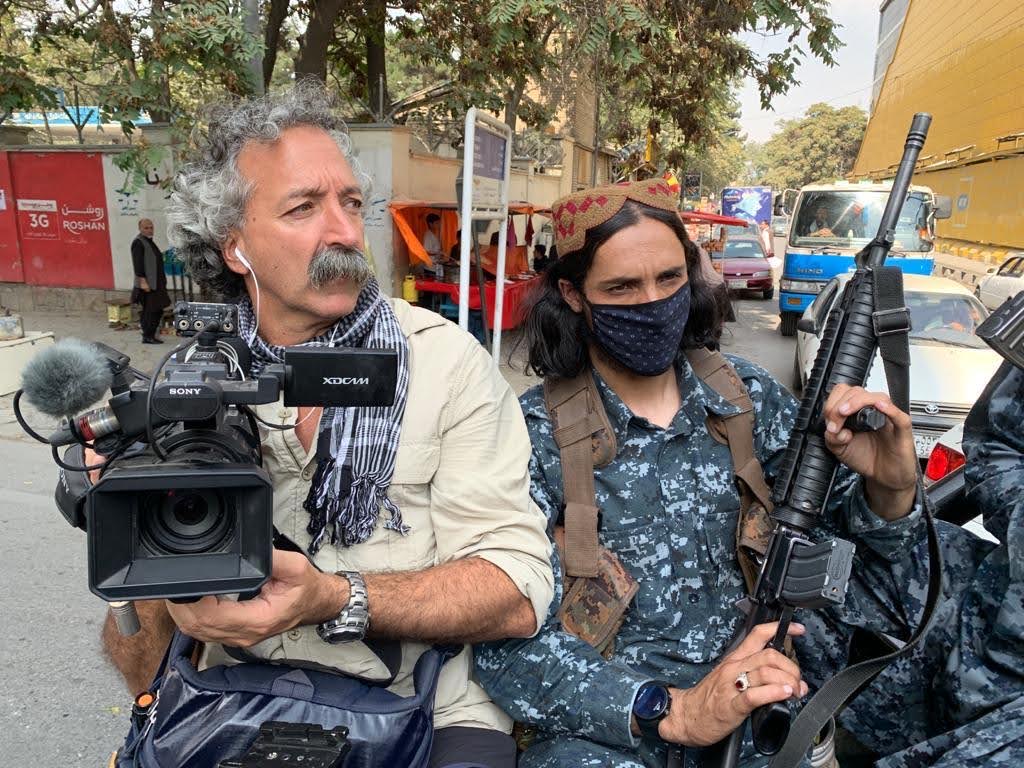 The government’s latest legislation on ‘extreme pornography’ is based on ill-informed notions, writes
The government’s latest legislation on ‘extreme pornography’ is based on ill-informed notions, writes
Julian Petley
Question: what do Lady Chatterley’s Lover, Last Exit to Brooklyn and Inside Linda Lovelace have in common? Answer: they were all subject to failed prosecutions under the Obscene Publications Act 1959 & 1964 (OPA). Next question: what do the Protection of Children Act 1978, the Video Recordings Act 1984, the Criminal Justice Act 1988 and the Criminal Justice Act 2008 have in common? Answer: they are all attempts to circumvent the OPA, whose provisions the censorious have long agitated against as overly liberal and ‘permissive’.
Thanks to the last of these measures, those suspected of possessing the ‘wrong’ kind of pornography can now look forward to having their homes and offices trashed by the police and their reputations publicly dragged through the mud; if convicted, they could languish for up to three years in prison. So how did we arrive at this extraordinary state of affairs?
The Criminal Justice Act defines an image as pornographic if ‘it is of such a nature that it must reasonably be assumed to have been produced solely or principally for the purpose of sexual arousal’ and as extreme if it is ‘grossly offensive, disgusting or otherwise of an obscene character’ and ‘if it portrays, in an explicit and realistic way, any of the following’:
(a) an act which threatens a person’s life,
(b) an act which results, or is likely to result, in serious injury to a person’s anus, breasts or genitals,
(c) an act which involves sexual interference with a human corpse, or
(d) a person performing an act of intercourse or oral sex with an animal (whether dead or alive),
and a reasonable person looking at the image would think that any such person or animal was real.
Those found guilty of possessing such images can be imprisoned for up to three years.
This Draconian piece of legislation has its origins in the simple fact that, thanks to the increasingly global nature of communications, and not least the development of the Internet, British subjects are now able to access material which the OPA would have made it extremely difficult to distribute in former times. As the Parliamentary Under-Secretary of State at the Ministry of Justice, Lord Hunt, put it in a Lords debate on the bill on 30 April 2008: ‘this legislation has been proposed because the controls in the Obscene Publications Act are much more easily evaded these days by the use of modern technology, namely the Internet, which makes it much easier to use and distribute and therefore easier to possess. As most such extreme material is hosted abroad, controls on publication and distribution are no longer sufficient.’
Obviously the new communications media do pose a challenge to all national systems of media regulation, but they pose a particularly acute one to the British authorities, habituated as they are in matters pertaining to sexual imagery to exercising a degree of control citizens of other democracies would regard as simply intolerable and enforcing ‘official’ standards of taste and decency they would (and indeed do) find utterly ludicrous.
Naturally, the British government finds it quite incomprehensible that Johnny Foreigner does not adopt its standards in this matter, but even it realises that it is so out of line with other countries that arriving at any kind of transnational standards of acceptability is a complete impossibility. However, rather than sensibly leaving well alone, they have decided that as they cannot criminalise the distribution of material emanating from abroad of which they disapprove, they will simply criminalise its possession instead.
This alone constitutes an extraordinary abridgement of individual liberty which may well fall foul of the European Convention on Human Rights. Indeed, in its pre-legislative scrutiny of the bill, the Joint Committee on Human Rights noted that the government had already indicated that it felt that the seriousness of the proposed offences justified interference with Articles 8 and 10 of the European Convention on Human Rights, which concern, respectively, an individual’s right to private life and their right freely to receive and impart information (including information which is offensive or unpalatable). However, the committee was concerned whether ‘the definition of the new offence is sufficiently precise and foreseeable to satisfy the requirement’ that interferences with these rights must be in accordance with the law. In particular it wondered whether an individual user of pornography would be able to know whether their possession of a particular image would constitute a criminal offence, and noted that ‘an assessment of whether an image is or is not “extreme” is inherently subjective’.
Highly subjective factors lie at the very heart of the Act’s definitions of ‘extreme pornography’, and have played a major role in every stage of its gestation. Thus, in the consultation document which sparked off the whole process in August 2005, the material which the government wished to make it illegal to possess was described variously as ‘abhorrent’, ‘degrading’ and ‘repugnant’. Announcing the consultation, Home Office Minister Paul Goggins, stated: ‘This is material which is extremely offensive to the vast majority of people, and it should have no place in our society.’
Vague and loaded words such as ‘grossly offensive’ and ‘disgusting’ have found their way into the act itself, even though subjective language such as this should have no place in legislation. As the Labour MP Ian Mikardo put it in a debate on 3 April 1987 prompted by an ill-fated Tory attempt to tighten up the Obscene Publications Act, the test of gross offensiveness ‘focuses on what might really be called gut reaction. It focuses upon the instant response of shock or disgust to particular pictures, either visual or conjured up in words. The party to the action is described as a reasonable person, but that is merely a code for a tribunal that will decide the issue. A reasonable person will not decide; the magistrate or jury — if there is a jury trial — will decide, and the term “reasonable person” is really a code name for them. As judges and juries will, of course, always regard themselves as reasonable, they will test the material according to their own personal, subjective and immediate responses.’
The bill’s invocation of the ‘reasonable person’ doesn’t let it off the subjective hook. The ‘reasonable person’ (who is quite distinct from the ‘average person’) is a useful legal fiction which denotes a reasoned and informed outlook on a legal question, and is well known in areas such as negligence and contract law. For example, a negligence case might well turn on whether the defendant’s conduct was culpable because it fell short of what a reasonable person would do to protect another individual from the foreseeable risks of harm. However, there is a very considerable difference between a jury being asked to decide how a reasonable person would act in such circumstances and how a reasonable person would judge an image — in particular, whether or not they would judge it ‘to have been produced solely or principally for the purpose of sexual arousal’.
A juror in an ‘extreme pornography’ case would also be required to determine whether the material in question portrays certain acts in an ‘explicit and realistic way’ and whether a reasonable person looking at the images of those acts would think that the persons or animals depicted therein were ‘real’. Again, this is a vain attempt to put a gloss of objectivity on what are bound to be subjective judgments, but in order to understand how on Earth any government could think it necessary — and indeed possible — to legislate in matters pertaining to realism and verisimilitude, we need briefly to explore the genesis of this measure.
In 2003 Jane Longhurst was asphyxiated by Graham Coutts, who visited Internet sites which contained pornography involving violence. He was subsequently found guilty of her murder. As a result, her mother Liz organised a 35,000-strong petition calling for the banning of such sites, in which she was vociferously supported by the moral watchdog mediawatch UK, her MP Martin Salter and her daughter’s MP David Lepper. The Daily Mail became a cheerleader for the cause, on 30 September 2004 running an article headed ‘My sister was murdered by a man obsessed with violent Internet porn. So why won’t anyone help me to close these websites down?’, which argued that the murder was ‘unequally disturbing in that it could have happened only in this high-tech age, committed by someone whose murderous fantasies were fuelled by appalling images freely available on the Internet’. That the court case produced no evidence whatsoever of a direct causal connection did not stop Salter and Lepper agitating remorselessly until they bounced this measure onto the statute book.
In other words, the government, terrified as always of being painted as ‘soft’ on such matters, produced a completely unnecessary, woefully ill thought out and thoroughly oppressive measure in response to a single incident — invariably the worst possible basis for legislation of any kind, as evidenced by the Dangerous Dogs Act 1991. Of course, forcing adults to take part in sexual activity against their will is, quite rightly, a crime, and any measure which helps the police to track down the perpetrators of such acts deserves support. But this most emphatically is not such a measure; it is aimed not at the perpetrators of such acts but at those possessing images of them — and of a very great deal else as well.
For example, a vast range of bondage, domination and sadomasochism (BDSM) material falls fairly and squarely within the ambit of the Act. Such material exists largely for the purposes of sexual arousal, may well be deemed grossly disgusting, offensive or obscene by the uninitiated, and may involve violence which certainly appears to be non-consensual, even though, in fact, it is merely role-playing by entirely consenting participants. As Susan Sontag put it in her seminal essay ‘Fascinating fascism’: ‘to be involved in sadomasochism is to take part in a sexual theatre, a staging of sexuality. Regulars of sadomasochistic sex are expert costumers and choreographers as well as performers, in a drama that is all the more exciting because it is forbidden to ordinary people.’
Our legislators may not have read Sontag, but during the period of nearly three years in which the act was in gestation they received literally hundreds of remarkably well-informed submissions making this point in one way or another — and entirely ignored them.
However, the net is cast even wider than BDSM. Thanks to the government’s mulish insistence — again, flying smack in the face of a great deal of expert opinion which it received — on including ‘explicit and realistic’ portrayals of certain acts within the remit of the legislation, the possession of certain entirely fictional feature films is now set to become a criminal offence. Films classified by the British Board of Film Classification are exempt from the act, but there is a huge range of unclassified material available from abroad on DVD at the click of a mouse. Particularly at risk, of course, are films which include both real sex and simulated violence. Examples which immediately spring to mind are Joe d’Amato’s Emanuelle in America (1977) and Emanuelle Around the World (1977), the hardcore version of Tinto Brass’s Caligula (1979), Oswaldo de Oliveira’s Bare Behind Bars (1980), many of the films of Jess Franco, and indeed whole swathes of European horror, crime and sex films which took advantage of relaxed censorship regimes in countries such as Italy and Spain from the late 1970s onwards. The fact that DVDs of these movies are easily available not simply from specialist dealers but from Amazon.com, hardly a sink of depravity, is the clearest possible indication that the standards of acceptability which this government is attempting to impose on British subjects are simply wildly out of kilter with much of the democratic world.
Of course, it might be argued that as long as the police interpret this legislation sensibly, it will not capture the extremely wide range of material I have suggested. However, the record of the police in the matter of allegedly indecent images of children, which includes questioning parents who have taken photographs of their children naked in the bath, hardly gives cause for optimism in this respect. Furthermore, the police were among the very few to respond positively to the consultation on this matter. It’s also extremely hard to avoid the conclusion that many of the respondents regard those whom they are policing as, to coin a constabulary phrase, ‘swirling around in a human cesspit of their own making’.
The best example of this sort of attitude came not from the responses themselves but from an article by Detective Inspector Ian Winton of the Nottinghamshire police in the Nottingham Post, 31 August 2006, in which he threatened: ‘We will not hesitate in using this new legislation. Those convicted of this new offence will have to sign the sex offenders’ register which will affect not just their relationship with friends and family but also their careers. It will make many users of extreme pornography think again.’
Even more worrying was the response from John Francis, the General Secretary of the Police Federation of England and Wales, who argued that: ‘the circumstances in which the material is found is not, at the present time, considered when sentencing takes place, as only the image charged can be so considered. This applies when considering the sexual nature of an image. For example, so called “snuff movies” whereby persons are actually killed on screen are currently not considered for a sexual motive. The circumstances in which the images are found should be considered. There is evidence of these movies being found with a great deal of pornography, which in itself is not illegal to possess. This also applies to mutilation images, scenes of crime images of murder victims, beheadings, etc. The question to be asked is why anyone would want these images in the first place. It is the circumstances in which they are found that implies a sexual motive. However, as legislation stands at present no account can be taken of them, as it is not illegal to possess these images.’
Yes, you did read that right: it is being suggested in all seriousness that if you possess images of death and violence, and if you also possess pornographic images, then you possess the former for reasons of sexual gratification.
Such responses suggest all too strongly that the police simply cannot be trusted to act reasonably or intelligently in these matters. One’s fears in this respect are only heightened by Lord Hunt’s revelation in the Lords on 30 April 2008 that the police see this offence as ‘a further means to take illegal material out of circulation and an additional tool to deal with individuals whose behaviour may be causing concern’. In other words, having failed under existing laws successfully to prosecute people whom, for whatever reason, they want to see behind bars, the police are to have this task greatly facilitated by legislation as catch-all as it is convenient.
The anti-pornography clauses of the Criminal Justice Act 2008 furnish a particularly striking example of how the government, having abandoned any pretence at regulating corporate behaviour, is ever more obsessively determined to micromanage people’s personal behaviour. In this particular instance, not trusting British subjects to use the new communications technologies ‘responsibly’, it has opted to frighten them into doing so, so that every time they buy an unclassified DVD or visit a website with sexual content they will wonder if they are breaking the law and risking being sent to prison. In other words, the government is busily installing a police officer inside the head of each and every one of us.





